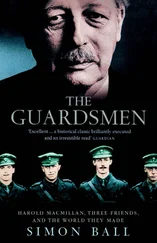Banks issued two sets of instructions concerning the transport of plants and the duties of the gardeners. The first, to Lieutenant Riou, outlining what he would need to do to accommodate the responsibilities of the gardeners and the health of the plants, both on the outward and return voyages. James Smith, Banks told Riou, was to be given overall charge of the coach and that was where he should live, ready, at a moment’s notice, to open or close windows as necessary; and Riou was to give every possible assistance to Smith in collecting rain water whenever possible on the understanding that in hot conditions, the plants would need plenty of watering. Riou was also told to choose one of the ship’s company to shadow Smith, and to learn from him how to care for plants so that he would become the gardener on the homeward voyage looking after the plants for the King, which would be stowed in the coach in the same manner as the plants on the outward voyage.[43]
The instructions to Smith dealt with the details of how best to keep plants healthy on their outward voyage; how much air and water to allow them and when; how to collect, keep and apportion water; and how to avoid, and to do so at all costs, sea water settling on the plants’ leaves, a situation, which if not remedied immediately, would lead to the plant’s death. As for the coach, Banks continued, ‘plants on board a Ship, like cucumbers in February, require a constant attendance’. Circumstances at sea changed often and abruptly and the gardener had to be prepared to open and shut the coach several times a day. In order to keep a watchful eye and act quickly and decisively, Banks warned him to ‘beware of Liquer, as one drunken bout may render the whole of your Care during the Course of the voyage useless & Put your Character in a very Questionable situation’.[44] Finally, as far as the voyage was concerned, Smith was to be constantly vigilant that shipboard animals – cats, dogs, mice and rats – and cockroaches did not get into the coach. Cat and dogs, Banks commented, could ‘destroy the whole garden in half an hour’. Vermin, like mice and cockroaches, could be dealt with by keeping the coach perfectly clean. As for monkeys and goats, Banks hoped these would not be allowed on board at all.[45]
Banks repeated that in New South Wales Smith should collect plants for the King’s Garden, and these he was to place in the same pots he went out with, and send them back with the Guardian , whenever the ship was ready to sail. For himself, he wanted Smith to look out for and collect seeds and dried specimens, with flowers and fruit, to dry them and place them between paper sewn into a book. Smith was asked to share all these instructions with George Austin, the other gardener.
On 15 July, Riou took Smith and Austin’s instructions to the ship, which was waiting in Portsmouth. He told Banks that as far as he was concerned, the coach was the King’s property and that he would be treating it as such.[46]
The plants, fruit trees, herbs and vines, many of them from Kew, some from Banks’s own garden and some from the nursery of Ronalds in Brentford, began to be loaded onto the Guardian in early July and continued in anticipation of an early sailing date.[47] At the same time, all of the other non-perishable supplies for the colony – clothes, hats, shoes, needle and thread, cloths and blankets, sugar, currants, pearl barley and sundry medicines – were placed on board. ‘We are excessively deep, nay too deep I fear to carry a Single Cow for the Cape,’ Riou commented.[48]
On 7 September Smith wrote to Banks assuring him that all the plants were on board and in good shape but that Austin, who was suffering from a swelling in his legs, was not. The sailing date had been announced as the next day. Riou had assured Smith that he was taking the business of the plants as seriously as he did the ship itself. Banks heard from Riou that he was very pleased with Smith: ‘he behaves in ye most attentive quiet, & but best manner, I wish only that all of the Superintendants [sic] had been men of his disposition.’[49]
It was looking good. As planned, on 8 September 1789, the Guardian left the anchorage in Spithead and headed towards the Cape. There were 124 people on board: 88 men in the ship’s company, 9 Superintendents of Convicts, including Smith and Austin, who were travelling to New South Wales to fill various posts in the colony, 2 other passengers, and 25 convicts with sentences varying from 7 years to life and who had been selected because they had special practical skills.[50]
After a short stop at Tenerife, where Riou bought about 2000 gallons of wine for the colony, the Guardian anchored in Table Bay at the Cape, on 24 November. Riou had previously reported to Banks from Tenerife that despite the fact that most of the plants had already spent almost three months on board, they were doing well. Now, in the Cape, Riou asked Smith to prepare a report on how the plants had fared on the Atlantic part of the voyage. Despite the most attentive of care, almost 20 per cent of the botanical cargo had either perished or was expected to do so.[51] The herbs fared worst – ‘the death of the herbs’, Smith told Banks, ‘is owing to the heat we had in crossing the line, as we was a week nearly becalm’d, and then it was exceeding hot, on the 13th of Octr the Thermometer ran to 104 degrees high, which was too hot for any English herbs to live in.’[52]
Riou, following Banks’s orders in case of disaster, asked Smith to replace as many of the plants as he could and add to the list any plants which he could only get in Table Bay and which he thought would do well in New South Wales. Smith turned immediately for advice to Francis Masson, Banks’s collector who was still at the Cape. Plants were bought and seeds too, mostly from the garden of Colonel Robert Jacob Gordon, commander of the Dutch garrison and an excellent botanist and gardener; and Riou went on his own spending spree for live animals – bulls, cows, stallions, fowl of all kinds, rams, ewes, boars and rabbits.[53] To accommodate this menagerie, Riou dismounted almost all of the guns and built stalls on both sides of the main deck and coops for all the fowl on the quarter deck. ‘With [the livestock] and an addition to all culinary Fruits of this Country amounting to about 150 Trees in number we were in a situation to be a most comfortable sight to Governor Phillip,’ Riou jotted down in his notebook.[54]
On 11 December 1789, the Guardian sailed out of Table Bay for the final leg of its voyage to Port Jackson.
Almost a fortnight later, by which time the Guardian had sailed more than 2000 kilometres to the southeast of the Cape, Riou spotted a large iceberg. Two boats were despatched from the ship to collect ice to supplement the fresh water taken on at the Cape. The animals were in need of hydration. The boats had hardly returned when a thick fog set in and the ship continued its course believing that the iceberg was being left behind. Instead, buffeted by winds from all directions, they were heading straight for it. Suddenly, out of the fog, Riou saw ‘a body of ice full twice as high as our masthead, showing itself through the thickest fog I ever witnessed’. The ship seemed to stick to the ice and then the rudder tore away. Riou ordered the decks to be cleared of cattle, guns and gun-carriages; the spare anchors and everything else from below that could be thrown overboard were jettisoned. It was in vain. The water kept flooding the ship and the pumps were overwhelmed. Riou offered those on board the chance to take to the launch and four smaller boats to save themselves.[55] Forty men, including four convicts, went in the boats and fifteen others, led by Thomas Clements, the Guardian ’s master, went in the launch.
Читать дальше












